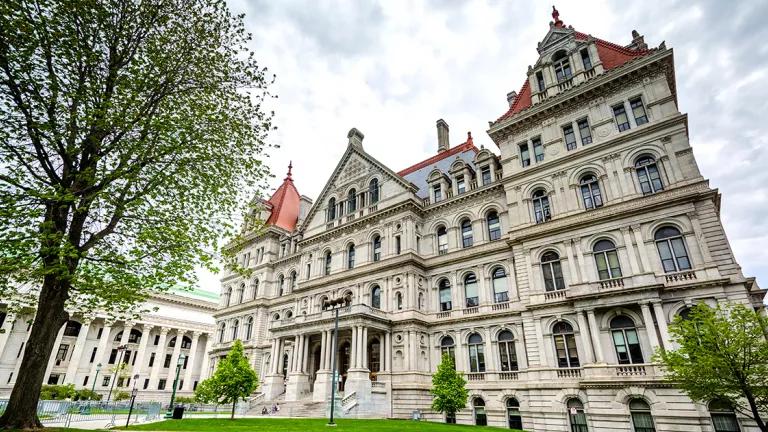Maximizing Synergies in Energy Efficiency Policy Worldwide

Meeting our global commitments to climate stabilization will require an even greater emphasis on energy efficiency policies than we expected before the Paris Agreement. However, analysis has shown that while policy has been fundamental to unprecedented efficiency gains in recent years, only one-third of the world’s energy use is covered by any type of efficiency performance standards.
Fortunately, energy efficiency policies that encourage innovation and competition, and help grow the economy, are available to help all nations of the world meet our challenging commitments.
A recent paper that I delivered at the ACEEE Summer Study on Energy Efficiency in Buildings conference discusses these efficiency policies in detail. They rely heavily on enhancing market forces: creating markets where they do not exist, emphasizing performance-based compliance with standards and specifications for energy efficiency, and continually improving technologies and practices in energy management.
Most importantly, they are based as much on carrots (incentives) as they are on sticks (penalties). And they reinforce each other. Not only does each policy make the rest of the suite easier to accomplish, but by working synergistically they can achieve greater gains together than one at a time.
Five types of policies to support energy efficiency
The policies we need fall into five major categories. While almost all of these policies have been used in some jurisdictions around the globe, or in pilot programs, no place has implemented all of them together. This means there is a great potential to step up the rate of achievement of efficiency to meet the needs of climate protection by reducing the need to burn fossil fuels to generate energy.
- General economy-wide policies
- Policies to accelerate market adoption of new technology
- Policies for the industrial sector
- Policies for the transportation sector
- Policies for structural change such as how to regulate utilities, how to reform financing of buildings, how to create markets in deep retrofit of buildings, etc.
General economy-wide policies
The most important policy to encourage efficiency is setting a cap or limit on greenhouse gas emissions. This is because energy efficiency is nearly always the lowest-cost and most effective way to reduce emissions. A cap is important not primarily for the fact that it puts a price on carbon, but because it sets a goal for businesses, government, non-profit organizations, and individuals that will shape their actions. The importance of setting goals— in the absence or placing price pressure on consumers— should not be underestimated. Business commonly sets goals for product introductions, sales, cost reduction, revenue growth, etc., and these goals guide organizational behavior in powerful ways.
This result—that the cap’s main effect is to inspire stronger policies promoting energy efficiency and renewable energy (rather than rely on pricing carbon)— can be seen in the California Air Resources Board’s (CARB) Scoping Plan for meeting greenhouse gas emissions limits. That plan relies on most of the policies discussed next, and has been realized in California by encouraging these policies to be broader in scope and more ambitious in extent.
Policies to accelerate market adoption of new technology
Market adoption policies can address part or all of the energy efficiency technology introduction cycle, from initial research and the creation of incentives to bring the products to market, all the way to policies such that assure 100 percent market acceptance. There are strong synergies within this set of policies, with each reinforcing the others. They have been used primarily in buildings and the equipment that operates within them. More information can be found in my paper.
Policies for the industrial sector
Some of these same policies also work for the industrial sector: standards, informative labels such as ENERGY STAR® indicating the more efficient products on the market, or Superior Energy Performance certification, and financial incentives provided by an agency with a public franchise, such as a utility.
But a new opportunity has opened up with “Strategic Energy Management”—a management process that requires companies to create a position of energy management team leader and provide the leader with the staff and other resources (including budget) to identify improvements in equipment, process, and O&M that meet ambitious targets for energy efficiency improvement year after year, and to implement them.
Policies for the transportation sector
There are two categories of key policies for the transportation sector. The first is to treat the efficiency of cars, trucks, aircraft, etc., comparably to those for buildings and equipment.
The second is to design infrastructure to minimize the use of high-emitting options such as cars and airplanes by improving the attractiveness of the alternatives: walking, biking, public transit, car-sharing, railroads, etc. Better urban design can increase the attractiveness of neighborhoods and allow families the option of owning fewer cars, saving hundreds of thousands of dollars as well as improving the quality of life.
Policies for structural change
The policies already discussed rely on a number of structural reforms. For example, utilities can play a major role in managed incentives, codes and standards, and market transformation, but only if their success in energy efficiency does not compromise their profitability. However, regulatory reforms can align shareholder interests with customer interests.
Energy efficiency improves cash flow for investors in buildings, because the savings in utility bills every month are larger than what is needed to amortize a mortgage that includes the extra costs of the efficiency measures. But the value of the savings has not been incorporated into lending and appraisal procedures. Thus a building that has lower overall monthly cost (including transportation, utility bills, and mortgage) will be considered “unaffordable” by lenders compared to a less-desired building with lower mortgage costs but higher overall costs. Reforming mortgage qualification rules to include those overall costs would be to everyone’s benefit.
And one of the biggest opportunities for emissions savings and economic development is deep retrofits of existing buildings—makeovers that cut energy bills by 40 or 50 percent or more. But home retrofits are happening about 80 times too slow to meet climate and job production needs, and most of them are not ambitious enough to meet the savings goal (because they are constrained by cost). We need to develop a market-based program to retrofit existing homes and commercial buildings over the next 15 or so years.
Conclusions
There is no tension between carrots, such as utility-sponsored rebates or tax credits, and sticks, such as appliance efficiency standards: they are both part of a comprehensive suite of policies.
We have the policy tools needed to help us meet our ambitious climate goals, relying most heavily on efficiency: what has been lacking is the political will to deploy all of the available tools.
Since efficiency promotes economic development and job growth, these tools also help with economic recovery. With the expanded and enhanced policies described here (and in more detail in the paper) we can generate even greater job growth and prosperity while saving the planet, both here in the U.S. and throughout the world.


